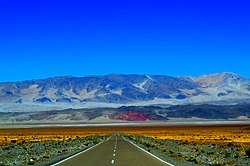This article needs additional citations for verification. (March 2013) |
Catamarca | |
|---|---|
| Province of Catamarca Provincia de Catamarca (Spanish) | |
 Road to Campo de Piedra Pomez | |
|
| |
 Location of Catamarca within Argentina | |
| Coordinates: 28°28′08″S 65°46′45″W / 28.46889°S 65.77917°W | |
| Country | Argentina |
| Capital | San Fernando del Valle de Catamarca |
| Departments | 16 |
| Municipalities | 36 |
| Government | |
| • Governor | Raúl Jalil (PJ/UxP) |
| • Legislature | Chamber of Deputies (41) Senate (16) |
| • National Deputies | 5 |
| • National Senators | |
| Area | |
| • Total | 102,602 km2 (39,615 sq mi) |
| Population (2022 census[1]) | |
| • Total | 429,556 |
| • Rank | 20th |
| • Density | 4.2/km2 (11/sq mi) |
| Demonym | catamarqueño |
| GDP | |
| • Total | US$5.0 billion |
| • Per capita | US$12,000 |
| Time zone | UTC−3 (ART) |
| ISO 3166 code | AR-K |
| HDI (2021) | 0.844 very high (7th)[3] |
| Website | www |
Catamarca (Spanish pronunciation: [kataˈmaɾka]) is a province of Argentina, located in the northwest of the country. The province had a population of 429,556 as per the 2022 census [INDEC], and covers an area of 102,602 km2. Its literacy rate is 95.5%. Neighbouring provinces are (clockwise, from the north): Salta, Tucumán, Santiago del Estero, Córdoba, and La Rioja. To the west it borders the country of Chile.
The capital is San Fernando del Valle de Catamarca, usually shortened to Catamarca. Other important cities include Andalgalá, Tinogasta, and Belén.
- ^ "Nuevos datos provisorios del Censo 2022: Argentina tiene 46.044.703 habitantes". Infobae. 31 January 2023. Retrieved 2023-02-03.
- ^ "TelluBase—Argentina Fact Sheet (Tellusant Public Service Series)" (PDF). Tellusant. Retrieved 2024-01-11.
- ^ "El mapa del desarrollo humano en Argentina" (PDF). United Nations Development Programme. 25 June 2023.

